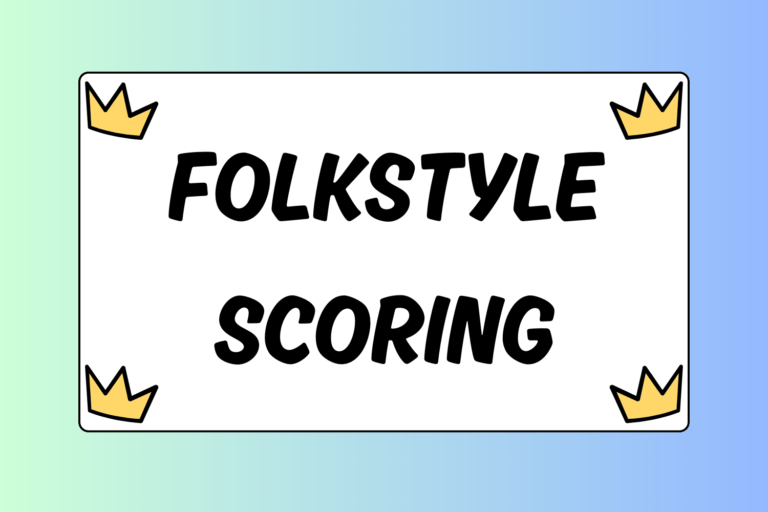A mat is the most essential piece of equipment for all wrestlers; without one, there would have no place to practice or compete. Purchasing a mat, however, is not an easy process. It costs an extensive amount of time and money. Whether you’re throwing down a mat in your garage or building a brand new wrestling room, this guide will provide you with the information you need to make an informed decision on a mat that is right for you or your wrestlers.
Size
There are a few options you have when selecting the size of a mat. You can choose a pre-cut mat that is typically stocked and made to order. Or, you can go with a custom set of mats to help fill a designated space. Below you will find details and benefits of each type.
Pre-cut Sections
If you’re looking for something quick and easy, mats that come pre-cut are your best bet. These typically come in one large piece, or in several small sections that form a full mat when you put them together. Keep these options in mind when planning the storage or transportation of your mat. Pre-cut mats, although not cheap, are more affordable than custom sized mats. They range anywhere from several hundred to several thousand dollars, depending on the size and quality. Here are some of the common sizing options, measured in feet (ft), that you will have when choosing a pre-cut mat:
- 18×18 ft
- 24×24 ft
- 30×30 ft
- 36×36 ft
- 38×38 ft
- 40×40 ft
- 42×36 ft
- 42×38 ft
- 42×42 ft
Pre-cut mats come in a variety of sizes, but the smallest size people purchase for home use is a 10×10 ft mat. This size is large enough to allow two wrestlers to drill comfortably. Keep in mind that such a small mat is generally only good for supplemental training, so extensive training shouldn’t be done on this size. Activities, such as live wrestling, should be saved for a larger space. A smaller pre-cut mat is also the most cost-effective option for home use, typically costing $500-$600.
Hot Tip: Putting the Pieces Together
Many pre-cut mats come in several long sections, typically ranging anywhere from 6×18 ft to 6×42 ft. Although you could put the sections together to complete a full mat, you may also be able to purchase just a few sections of a full mat to fit a longer, narrower space, such as a garage or warehouse.
Custom Mats
If you can afford it, and have a space designated solely to wrestling, purchasing a custom mat is definitely the way to go. Typically, custom mats fit wall-to-wall, and can cover as much of your floor space as you desire. Custom mats are also important for “unique” spaces where pre-cut mats (standard sizes) won’t fit. This allows you to effectively fill your space while maximizing the level of safety you can provide for yourself or your wrestlers. For these reasons, custom-built wrestling mats are more expensive than pre-cut mats, costing around $10,000 or more.
Surface Padding
Surface padding for walls and doors — and any other surfaces around the floor — can be purchased in addition to the floor mat. These types of pads help to keep wrestlers safe during live wrestling and other types of rigorous training. If you’re building a mat room at home, this may not be necessary. However, surface padding is extremely critical for school and club teams with large numbers of wrestlers who will be training extensively at the facility.
When considering surface padding, keep in mind the various surfaces that may need to be padded when designing your custom mat room. Pillars in the center of a room absolutely need to be padded. Also, any fixture that protrudes from the wall — such as climate boxes — may also need to be covered with padding. Consider the unique needs of your space, and voice any concern regarding surface padding when ordering or inquiring about a custom mat.
A money-saving option for customized surface padding is pre-cut sections or panels. Panels of padding may be placed on walls or other surfaces that do not require custom-fitting to help protect wrestlers. Pre-cut panels typically come with a wooden backing that allows them to be easily fastened to a wall or other surface. This is a great option for your home.
Thickness
You have several options when it comes to the thickness of a wrestling mat. Thinner mats are typically lighter, and thus easier to transport and store. This is helpful if you don’t have a space that allows you to leave your mats out all the time. Thicker mats are typically heavier, more durable, and better for a space where you can leave the mats out. Below are common thicknesses you will be able to choose from when ordering your mat, all measurements will be in inches (in):
- 5/8 in (used to supplement another mat, not to be used alone)
- 1 in
- 1.25 in
- 1.5 in
- 2 in
Although you may not need to furnish a mat for a sanctioned event, it still helps to know what the current regulations are, in terms of mat thickness, to help you get a better idea of what you may need. For internationally sanctioned matches, mats must be between five and seven centimeters in thickness. For folkstyle competition in the United States, the thickness of the mats must be between one and four inches. Essentially, no matter the size of the mat, the core must have the shock-absorbing qualities of a two-inch thick “hair-felt” mat (a traditional type of mat made of cattle hair).
Surface & Core Material
The surface of all wrestling mats are typically made from a non-abrasive vinyl or canvas material. This durable coating helps prevent cuts and cracks in the mat, and also prevents moisture from soaking into the core. These qualities make wrestling mats durable and easy to clean.
The majority of wrestling mats have some type of foam core. Certain types of foam cores are lighter in weight than others, and the weight of the core directly correlates to the weight of the entire mat. One of the most common types of padding used for mats is PVC nitrile foam. This type of foam is typically heavier than other types of cores, and allows a sufficient amount of shock absorption, depending on the thickness of the mat.
Hot Tip: Perfect Texture
Although all wrestling mats are made similarly using a vinyl (plastic) surface, different kinds of mats may have a different texture or feel to them. Some mats are “slick” or have a smooth surface which allows wrestlers to move across it with limited instances of skin burns. Other mats are made from a “rougher” surface which does not allow a wrestler to slide. Rougher textures are typically reserved for competition mats. Knowing that the texture of the mat’s surface can vary will aid you in purchasing a mat that is just right for you or your wrestlers.
The Right Fit
You should now have a better idea of what to look for when purchasing a wrestling mat. At the end of the day, you need to choose a mat that is right for your space and your wrestlers. The upside to this is that you have many options to choose from when selecting the right mat, so keep this guide in mind when considering the different types of mats. For more specific information on wrestling mats that are used for competition, check out Dimensions page. Good luck!





